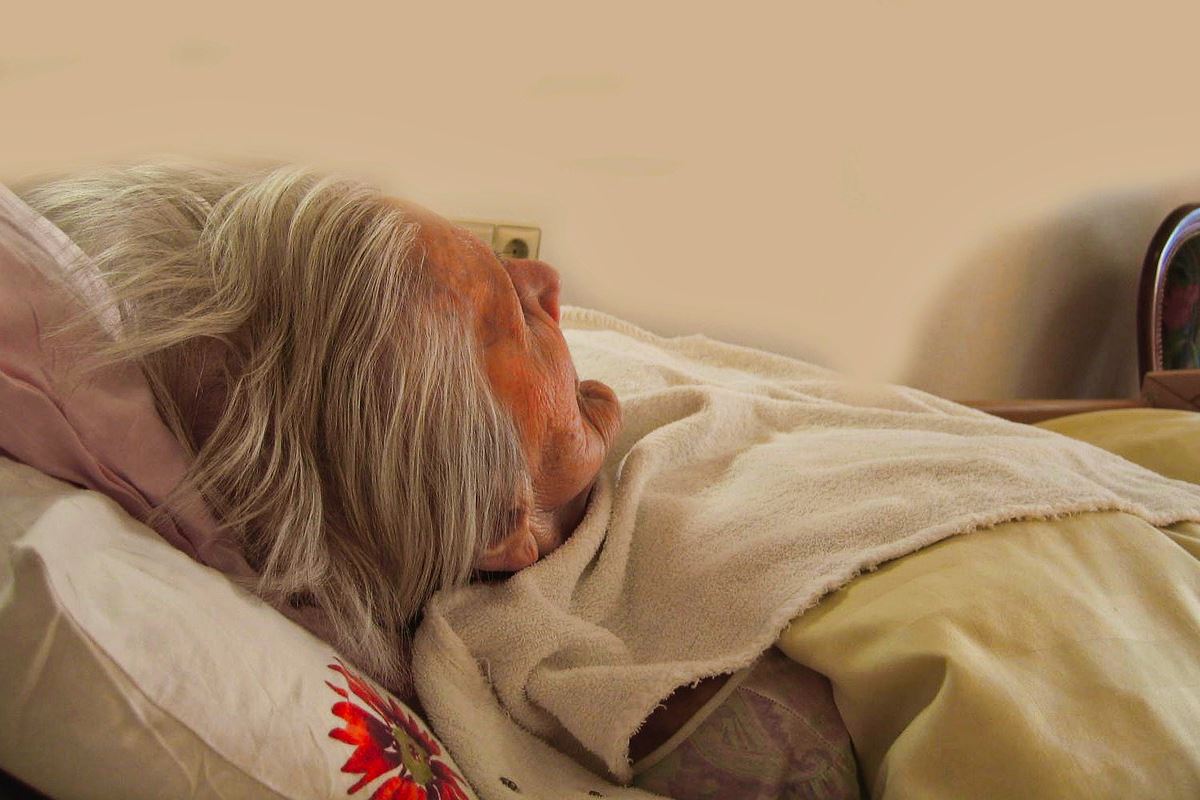What is Terminal Restlessness?

When an individual is nearing their final days, terminal restlessness is a common symptom. Terminal restlessness (sometimes called terminal agitation) includes anxiety, agitation and confusion. These signs are more intense than simple mood changes and can be very troubling for family members.
Terminal Restlessness
While you can expect anyone with an illness to be depressed, irritable, or sullen, terminal restlessness is more difficult for family members to manage. Even mild-mannered individuals may suddenly become extremely agitated, making angry accusations. They may demand to get up or want to call the police or an ambulance. Their body may jerk or twitch or they may pull at their bedding or clothing.
Individuals experiencing terminal restlessness may experience agitated delirium, disorientation, and hallucinations.
Causes of Terminal Restlessness
When an individual is experiencing the symptoms of terminal restlessness, it is important to determine if it is being caused by something that can be treated to alleviate their distress.
Causes of terminal restlessness can include, but are not limited to:
- Medication – High or long-term use of opioids, steroids and anti-seizure medication can cause agitated delirium.
- Pain – Uncontrolled pain can cause terminal restlessness. Patients at this stage in their illness may be unable to communicate their pain, so caregivers should speak to their hospice care team about this possibility.
- Fever – Fevers can be a sign of infections or sepsis.
- Metabolic disturbances – A chemical imbalance caused by vital organs beginning to shut down at end of life.
- Decreased oxygen to the brain, brain tumors, or brain swelling
- High calcium levels
- Constipation, fecal impaction, or urinary retention
- Emotional turmoil
How to Help Someone Experiencing Terminal Restlessness
If the patient is experiencing terminal restlessness due to pain or another treatable cause, the hospice team will first treat this. If there is no treatable symptom, the best course of action is to try to calm the individual and keep them safe. This may include adding side rails to the patient’s bed to prevent them from getting up.
Family caregivers can help their loved one by spending more time with them. Stay by their side to keep them from getting up or accidentally harming themselves. Offer reassurance and a calming presence by reading favorite stories or prayers. Play soothing music and do gentle massage. In order to maintain a calm environment, it may be helpful to decrease the number of visitors.
Understanding what terminal restlessness is and learning about other end-of-life signs can help family members cope with the changes their loved one experiences. The sudden burst of terminal restless can be very concerning for family members. Speak to your hospice team about any concerns you may have for your loved one’s safety or if you need additional emotional and spiritual support to help you cope.
Crossroads Hospice & Palliative Care provides support to terminally ill patients in their home, assisted living facility, or nursing home. To learn more about the care we provide, please call 1-888-564-3405.
If you found this information helpful, please share it with your network and community.
Copyright © 2018 Crossroads Hospice & Palliative Care. All rights reserved.



